

|
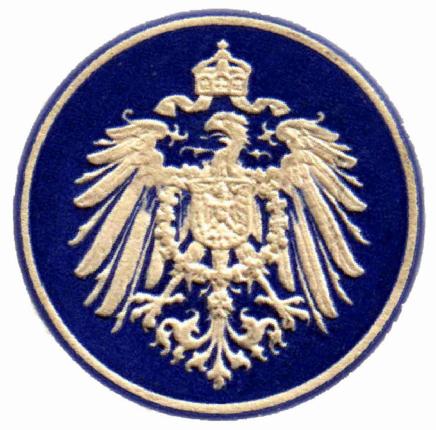
|
Postage Stamps used in the German Marshall Islands 11--Forgeries and Fraudulent Overprints by Dirk H.R. Spennemann |
| In this chapter we will describe the fraudulent stamps, both complete forgeries as well as falsified stamps. Expanded versions are available for most sections in this chapter. These contain more detail, in paricular more illustrative material and all references. The reader is encourage to peruse these if more detail is required. The fraudulent overprints of the "G.R.I." stamps have been dealt with in the chapter on the British Occupation Stamps.
Many forgeries are confined to the manipulation (such as backdating) or full recreation of cancels. These activities were not confined to the Marshall Islands, but were committed by German postal workers in other Pacific colonies as well. Among the latter, the administrators in the Marianas were particularly inventive and busy.
|
|
Fournier forgeries |
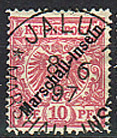
|
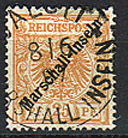
|
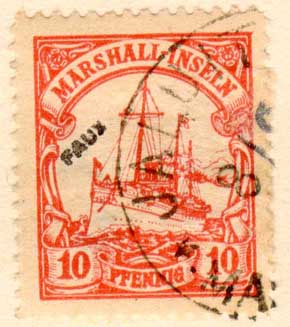
|
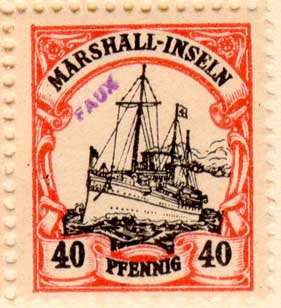
|
| Fournier Forgeries of Eagle issues [show more detail] |
Fournier Forgeries of Yacht issues [show more detail] | ||
|
Forged overprints on genuine domestically used stamps The stamps have domestic cancels, often with dates which are clearly impossible. Common to all forgeries is the weak and fuzzy execution of the overprint, as well as the fact that the angle is less steep than normal. These forgeries were made by overprinting genuinely cancelled German stamps. A seperate page provides more detail. |
|
|
|
|

|
| Forged overprints on genuine domestically used stamps [show more detail] | |||
|
Brussels Forgeries In 1903 forged overprints of German colonial stamps were reported in the philatelic press. The the reconstructed trail of these stamps led via Madrid to Belgium. Among the distinguishing marks were that the overprint was that the capital letters were thinner and proportionately longer than among the originals. Also, the angle of the overprint is a bit lower than in the original. In 1906 a number of forgeries of German colonial stamps, particularly Eagles issues from the Marianas and the Marshall Islands (Marschall) hit the market. These were forged overprints on genuine German Eagle issue stamps. The were sold by a dealer in Cologne, who in turn claimed to have acquired them from Brussels. A seperate page provides more detail. |
|
US forgeries |
|
Hialeah forgeries |
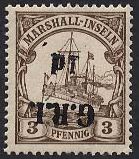
|
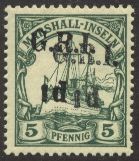
|
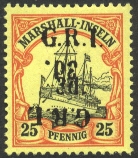
|
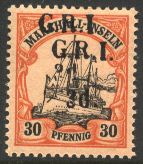
|
| Examples of Hialeah forgeries [show more detail] | |||
|
Mourning Labels and Advertising stamps |